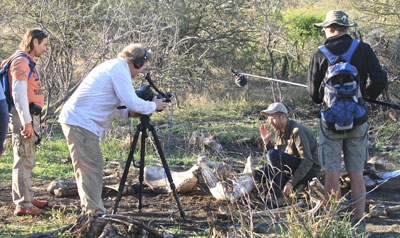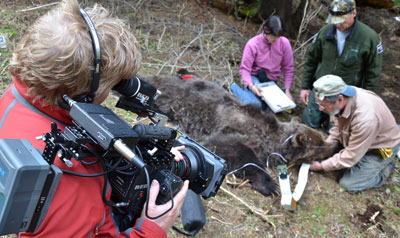
Wild Ways is a lively and engaging exploration of a new relationship with nature, where humans choose to leave room for other species to survive.
Wild Ways ventures to some of the most storied landscapes on Earth to understand if the world’s parks and preserves can function as the last bastions of wild nature. Most of the world’s protected areas have become biological islands in a sea of human development. We are learning that is a serious problem.
Since the industrial revolution, 7 billion humans have edged out billions of other living species – plants and animals. We are now losing as many as one species every three minutes in an event biologists call the Anthropocene Extinction. Yet while the biodiversity crisis is at the forefront of conservation science, it is hardly acknowledged in the popular press, or in spectacular nature series like “Planet Earth” and “Life.”
Wild Ways features the world’s top biologists who are working to save wildlife populations while there is still time by answering key questions: How big does a park need to be? How many animals are required for a sustainable population of the world’s iconic species – lions, grizzly bears, elephants, and wolves? Where do wild animals need go? By identifying and preserving habitat for these umbrella species, conservationists can protect critical ecosystems around the world.
Wild Ways introduces the father of Conservation Biology, Michael Soule, who explains a promising solution - Connectivity Conservation. By re-linking remaining wild places with wildlife permeable landscapes, we can recreate a large functioning ecosystem that can nourish wildlife in an ever more crowded world. With connectivity, wildlife populations can interbreed, and repopulate areas stressed by drought, epidemic, fire or flood. Animals can move between seasonal habitats for food and water, and in response to a changing climate. Without connectivity, our parks and preserves will become islands slowly eroding towards extinction.
Wild Ways explores ambitious large landscape initiatives around the world. We will feature a seminal project, Yellowstone to Yukon, as championed by Harvey Locke. We’ll study a exciting newer initiative, the Kavango Zambezi Transfrontier Conservation Area, where five southern African nations are trying to connect 36 preserves across 400,000 square kilometers. We track elephants with Mike Chase and Elephants Without Borders, whose studies are being used to define the extent of the KAZA TFCA.


Wild Ways is a groundbreaking film that brings to light the cutting edge of Conservation Biology. Says Michael Soule,“This era that we're in now, could be a wonderful opportunity or a tremendous failure for humanity. It's our last chance to protect the diversity of life on Earth.”
